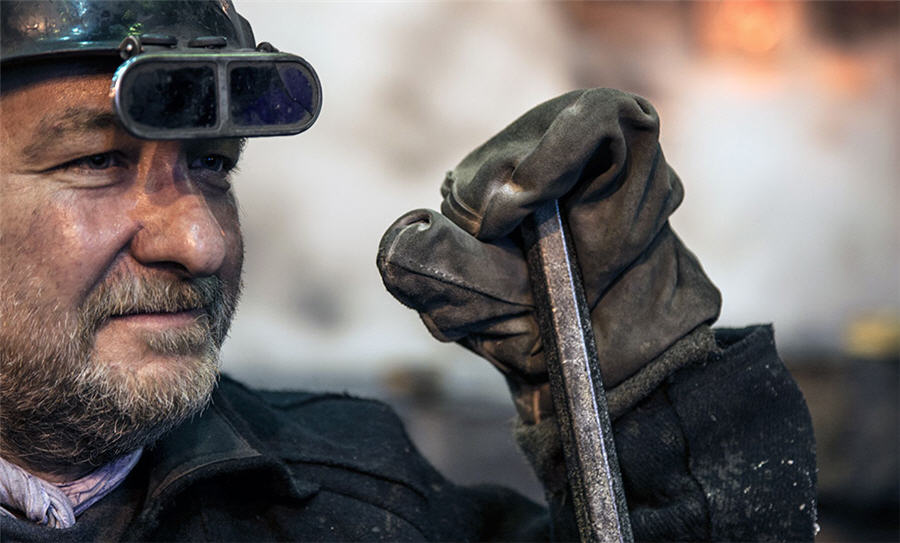
Palladium surged above $1,500 an ounce to a record, extending a powerful rally that’s been driven by an acute shortage of supply as car manufacturers scramble to get hold of the material to meet stringent emissions controls. The advance will benefit top suppliers in Russia and South Africa.
Spot palladium surged as much as 1.7 percent to $1,505.46 an ounce, and traded at $1,501.28 at 11:52 a.m. in London, with prices set for a seventh straight monthly gain. In other precious metals, gold rallied to a 10-month high, while silver and platinum both climbed.
A “massive shortage” has built up as the auto market moves away from diesel-powered vehicles.
The silvery-white metal has more than tripled since January 2016, and Citigroup Inc. said this month that further gains may be in store, warning the market will only balance with a shock to demand and prices may hit $1,600. The global deficit looks set to “ widen dramatically” this year, according to Johnson Matthey Plc, a leading maker of autocatalysts, and BlackRock Inc.’s Evy Hambro told Bloomberg TV this week that a “massive shortage” has built up as the auto market moves away from diesel-powered vehicles.
“Until you get an increase in supply coming onstream, which isn’t going to happen for a few years yet, this is going to result in a tight market and prices generally trending higher,” Philip Klapwijk, managing director of Hong Kong-based consultant Precious Metals Insights Ltd., said on Wednesday.
Tighter supplies of the metal, used mainly to curb emissions in gasoline vehicles, have prompted users to lease material from exchange-traded fund holders to meet their needs. Heraeus, a refiner, said physical palladium ETF holdings fell to 700,000 ounces at the end of 2018, down from a peak of 2.9 million in 2014. It’s hard to gauge the exact level of global stockpiles, but various sources have estimated a range between 10 million and 18 million ounces, which equates to roughly one to two years of demand, Heraeus said.
Still, some analysts are questioning the durability of the rally. Car sales in China continued to drop in January after their first full-year slump in more than two decades. Plus, markets in Europe and North America are shrinking as ride-hailing and car-sharing services make it less necessary to own a vehicle.
Tighter emissions rules are “outweighing the weakness in global auto sales and the growing threat from EVs,” said Matthew Turner at Macquarie Group Ltd. “So while we’ve known about deficits and projected deficits for years, the market’s ability to adjust to them is unusually constrained.”
Palladium is a rare metal produced mostly in two countries, so it may not be possible to boost output immediately. More than 80 percent comes as a byproduct from nickel mining in Russia and platinum mining in South Africa, so supplies depend on the extraction level and investment in other minerals.
Russia’s MMC Norilsk Nickel PJSC has said the risk of automakers switching from palladium toward cheaper platinum is low, even as the gap between the two climbs. “It is not easy — you need to do R&D, register the technology,” said Anton Berlin, head of analysis and market development at Nornickel, the biggest palladium producer. “It may take up to 18 months.”
The jump in palladium has also aided South African producer Anglo American Platinum Ltd., and the company expects the three major platinum-group metals, including rhodium, will again be in a combined deficit in 2019. “Automotive demand seems set to increase, even with little or no growth in vehicle sales, as average vehicle size increases and emissions rules tighten,” it said this week.
Still, the metal’s stunning rally could be due for a pullback.
“While we share the view of undersupply and likewise see little substitution potential, we believe this is already priced into palladium,” Carsten Menke, an analyst at Julius Baer Group Ltd., said in a report. “Due to the prevailing positive sentiment, short-term price risks still seem skewed to the upside,” but these levels are not sustainable in the longer term, he said, adding that the bank’s 12-month target is unchanged at $1,000 an ounce.
In other metals, spot gold rose as much as 0.4 percent to $1,346.80 an ounce, the highest since April, as silver and platinum gained. The moves came before the release of minutes from the Federal Reserve’s January meeting, at which policy makers signaled rates won’t be raised again until inflation accelerates.
(By Ranjeetha Pakiam)